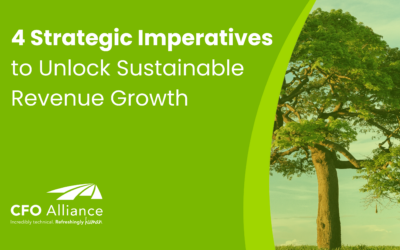3 Things Every Business Owner
Needs To Know About R&D Tax Credits
Can your company use an extra $250,000 tax credit?
- Are You Eligible for the R&D Tax Credit?
- Can You Claim the R&D Tax Credit More Than Once?
- How Do You Claim the R&D Tax Credit?
Are you planning to claim the R&D tax credit this year? If not, have you considered whether it may be an option for your business? Every year, countless businesses fail to claim the R&D tax credit, usually because they don’t know about it or they think they don’t qualify. If that’s you, we’ve got good news. You could receive a credit of up to $250,000 for some of your current standard processes.
Let’s start by examining what this tax credit is and what it means for you.
What Is the R&D Tax Credit?
The Research & Development (R&D) Tax Credit allows companies to receive a credit of up to $250,000, which can be applied to offset payroll taxes or federal and state income taxes.
Now, you may be thinking that your company does not do research or development. Don’t be so sure. Uncle Sam is not talking exclusively about guys in white lab coats. The government’s definition of research and development is much broader than you might think.
Since its launch in the 1980s, the R&D tax credit has delivered an infusion of working capital to U.S. businesses operating in industries across the U.S. That includes many activities that aren’t considered groundbreaking research. For example, if you have someone whose job is to cut material more efficiently or reduce waste, that person’s payroll – the amount of time they spend doing that task – can be eligible for the tax deduction.
Is My Business Eligible for the R&D Tax Credit?
Many entrepreneurs assume the program sounds too good to be true, so they don’t pursue more information about the benefit. That’s a big mistake.
The goal of the R&D tax credit is to reward you for investing in innovation, even if it isn’t what you might typically think of as research and development. If your company tests products, employs engineers, engages in data science and/or data analysis, or conducts outsourced product research, you can claim the credit.

Now for the caveat. No matter what type of business you run, if you want to claim a tax credit for research and development, you must keep proper documentation to prove that your expenses qualify. While the concept is simple, a traditional R&D tax study is notoriously complex. You may need to talk with someone who is an expert in this field if this is new to you.
Can I Claim the R&D Tax Credit More Than Once?
Claiming the R&D tax credit does not have to be a one-time thing. As long as your company continues to produce products, you can claim this credit every tax year. However, you will need to perform a new tax study each year.
If you have already filed your 2022 taxes, don’t worry! It’s still not too late to claim your credit. You can amend your returns to monetize the R&D income tax credit, and you can even consider performing a “look back” up to 3 years to capture unclaimed tax credits.
Additionally, if your business took advantage of the PPP loan program, you still may be eligible to claim the R&D credit.
How Do I Claim the R&D Tax Credit?

The first step is to understand what kind of work qualifies for the credit. You may be surprised to learn that anything from engineering to autoCAD designs to testing and quality assurance all the way up to developing tools, molds, and dyes are all covered by the R&D tax credit.
The IRS definition of R&D covers many qualified activities including fabrication, engineering, new product and process development, new concepts or technologies, design (layout, schematics, autoCAD, prototyping, modeling, testing/QA), software development, and automating or streamlining internal processes.
Once you know which of your standard processes may be claimed, you will submit the R&D tax credit with your annual business tax return. You’re required to keep detailed records documenting the criteria used to qualify for the credit. Documentation must also show that your credit was calculated from your related qualifying costs.
Why all the paperwork? Uncle Sam likes to make sure all the i’s are dotted and the t’s are crossed, so it is important to have rock solid documentation.
What Do I Do Next?
If you’ve never claimed the R&D tax credit before, either because you didn’t think you qualified or because you thought you couldn’t use the credits, now is a great time to reconsider. The R&D credit can provide a meaningful cash injection into your business, and you probably qualify for more than you think.
At CFO Alliance, empowering innovative entrepreneurs is one of our core values. That’s why we help companies like yours discover and take advantage of the most favorable components of the R&D tax program. If you have questions about how you can claim your credit, we would love to talk with you!
Don’t miss out on R&D Tax Credits
Contact us before you file your 2022 business return.
Related Post
4 Strategic Imperatives to Unlock Sustainable Revenue Growth
4 Strategic Imperatives to Unlock Sustainable Revenue GrowthCreating long-term, sustainable revenue growth takes more...
Future-Proof Your Workforce with a Modern Talent Agenda
Future-Proof Your Workforce with a Modern Talent AgendaWhat does the future of talent look like? It’s a fair question,...
The Talent Behind the Tech: How Skills-Based Hiring Supports Technology Innovation
The Talent Behind the Tech: How Skills-Based Hiring Supports Technology InnovationStaying relevant with technology in...




